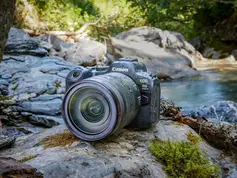Solarization Photography
- The Magazine For Photographers

- 6 minutes ago
- 2 min read

What Is Solarization?
Solarization (also known as the Sabattier effect) happens when you partly expose a developing photo or film to light, then continue developing it. Instead of ruining the image completely (which exposure to light normally does), it reverses the tones in certain areas → blacks turn silvery, highlights go darker, and you get glowing outlines around shapes.
Back in the film days, it was a happy accident. Someone accidentally turned on the light in the darkroom mid-development, and instead of tossing it, they realised it actually looked pretty good.
Today, you can do it digitally too of course, but the vibe isn’t really the same.
How It Works (Analog Version)
In traditional film photography, here is roughly what happens:
You start developing your photo like normal in the darkroom.
Midway through development, you briefly expose it to light (just a BIT, maybe half a second).
You then keep developing as usual.
That is it! Some parts will stay normal, others flip their tones, and everything goes a bit more metallic.
You can look at it as controlled sabotage. You are messing with the chemical reaction while it is happening, and every small change in timing, light strength, exposure will affect the result. That is precisely why no two solarized photos ever look exactly the same.
Doing It Digitally
Want to read more?
Subscribe to themagazineforphotographers.com to keep reading this exclusive post.









